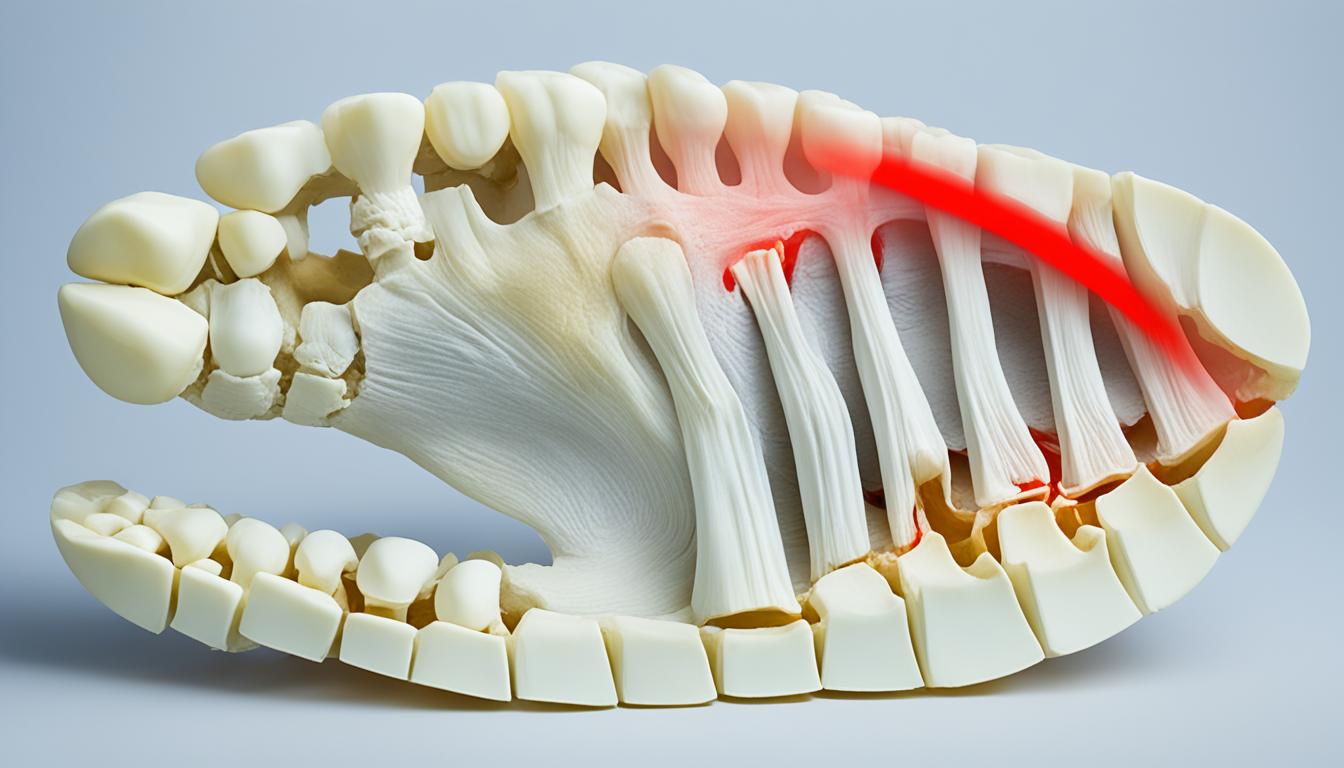Fallen arches, or flat feet, are when the foot’s arches are low or gone. The entire bottom of the foot touches the ground. This leads to foot pain, the foot rolling inward, and trouble wearing shoes that fit well.
Causes of flat feet can come from family history, injuries, being overweight, and health issues like arthritis or diabetes. Doctors check by looking at your feet and medical history to find if you have flat feet. Fixing flat feet can be as simple as using special insoles. But for some, more advanced treatments like stem cell therapy can help. Stem cell therapy helps repair the damaged tissue in the foot and ankle.
- Fallen arches, also known as flat feet, can cause foot pain and difficulty in finding comfortable footwear.
- Genetics, injury, obesity, and medical conditions like arthritis and diabetes are common causes of fallen arches.
- Diagnosis is typically based on physical examination and medical history.
- Treatment options include conservative measures such as arch support and orthotics.
- Stem cell therapy is an advanced therapy that promotes tissue repair and regeneration.
Symptoms and Causes of Fallen Arches
Fallen arches, or flat feet, bring many issues. The main problem is foot pain, especially in the arches. This pain can hinder daily life.
People with this issue may find their feet swelling and feeling stiff. They often have a hard time choosing shoes that feel good.
Overpronation is common too. This means the feet roll too much inward. It adds to the discomfort by straining the arches.
Some might not have flat feet but high arches, called pes cavus. With high arches, issues like ankle sprains and bunions are more likely.
Genetics is a big cause of fallen arches. If someone in the family has flat feet, you might too. Injuries, obesity, and health problems like arthritis can make things worse.
Wearing the wrong shoes is also a factor. Choosing footwear with good arch support is key. It maintains foot health by supporting the arches.
Fallen arches lead to several issues. Finding the cause and proper treatment is important. With the right care, foot health can improve.
Diagnosis and Stem Cell Therapy for Fallen Arches
Fallen arches, or flat feet, are diagnosed by an orthopedic specialist with a physical exam. The specialist looks closely at the foot shape and checks for any odd shapes. They also test how well the feet and ankles can move to understand the problem’s seriousness. Additionally, they ask about your medical history to find any causes for the flat feet.
Sometimes, to get a full view of the feet, the specialist might suggest X-rays or MRIs. These tests show more about the bones’ alignment, joint health, and any other issues.
After getting a diagnosis, you can discuss treatment options. For less severe cases, arch support or orthotics might help. But, for others, stem cell therapy offers hope. This treatment uses the power of stem cells to repair and regrow tissue. This new method could bring lasting comfort and better movement for those with flat feet.

